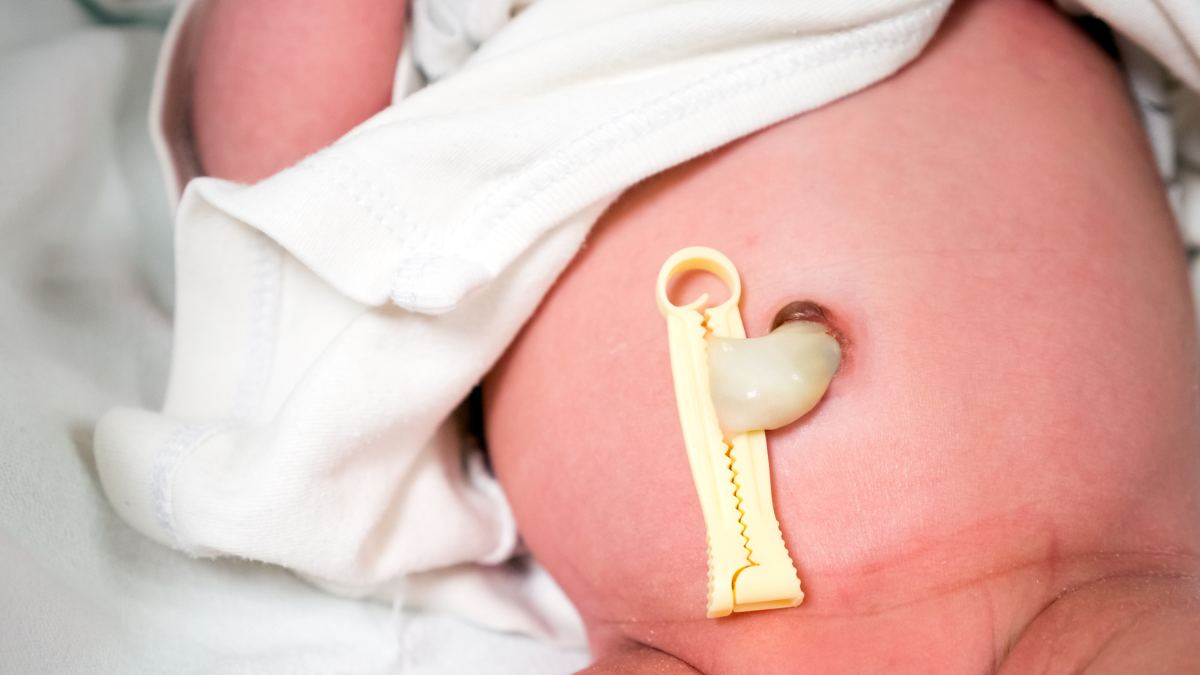
The umbilical cord cutting is a special moment — after all, it’s what’s kept you and your baby connected for the past 40 weeks of pregnancy. You may choose to cut the umbilical cord yourself, have your partner do it; a loved one, or just get your doctor or midwife to do it.
Delayed cord clamping (also known as ‘optimal cord clamping’) is when you wait at least one minute before cutting the umbilical cord after your baby is born. The method is recommended safe and effective by the World Health Organization and is believed to be better for your baby, rather than cutting the cord immediately after birth.
We explain everything you need to know about umbilical cord cutting, including how it’s done and the benefits of delayed cord clamping.
The umbilical cord is a tube made up of two arteries and one vein, which is covered in a thick substance known as ‘wharton’s jelly’. It forms when you’re around five weeks pregnant and it serves as a lifeline to your baby. It transports nutrients and oxygen from you to your baby and passes back waste from the baby via the placenta.
It grows up to two feet long and runs from your baby’s belly button to the placenta. There may be some facts that you may not know about the umbilical cord too, for example some women donate it after giving birth as its blood is rich in stem cells which can help cure diseases.
You and your baby won’t feel the umbilical cord being cut. Regardless of whoever cuts it the process will be the same:
• Your doctor or midwife will make sure the umbilical cord has stopped pulsating
• Two clamps will be placed on the cord
• Whoever is cutting the cord will hold a section of it with a piece of gauze underneath it
• They’ll then be given a pair of sterile scissors and cut between the two clamps
Traditionally the umbilical cord would be cut immediately after you had given birth to your baby — whether that be a vaginal birth or C-section. However, new guidelines recommend delayed umbilical cord cutting, where you wait a minimum of a minute before cutting the cord.
The evidence shows that by doing this the amount of iron in your baby’s blood will increase, which is essential for your baby’s brain development and neurodevelopment in later childhood. It also allows more blood to flow from the placenta, which keeps your baby’s blood pressure more stable once the cord is cut (which creates a sudden drop).
Your doctor or midwife may recommend you don’t have delayed cord clamping if there’s concerns about your baby’s heartbeat or if they have breathing problems.
If your baby is premature then delayed cord clamping is even more beneficial as your baby’s organs are fragile. By delaying cutting the umbilical cord it can improve your baby’s blood pressure and protect their delicate organs. The same applies if your baby is sick.
Although delayed cord clamping is beneficial in most situations, there are certain circumstances where it may not be recommended, including:
• If you’re bleeding heavily and are in need of immediate medical treatment
• If there’s a problem with the placenta
• If the umbilical cord is bleeding so the blood isn’t able to reach your baby
• If your baby is struggling to breathe and needs resuscitation
• If you’re having monochorionic twins then delayed cord clamping is not recommended. This is because the twins will share the same placenta and there is a risk that blood could move from one twin to another. If one twin has more blood than the other, delayed cord clamping could make the situation worse.
And there you have it, everything you need to know about cutting of the umbilical cord after delivery.
© 2023 All rights reserved Baby & Toddler - part of parent promotions